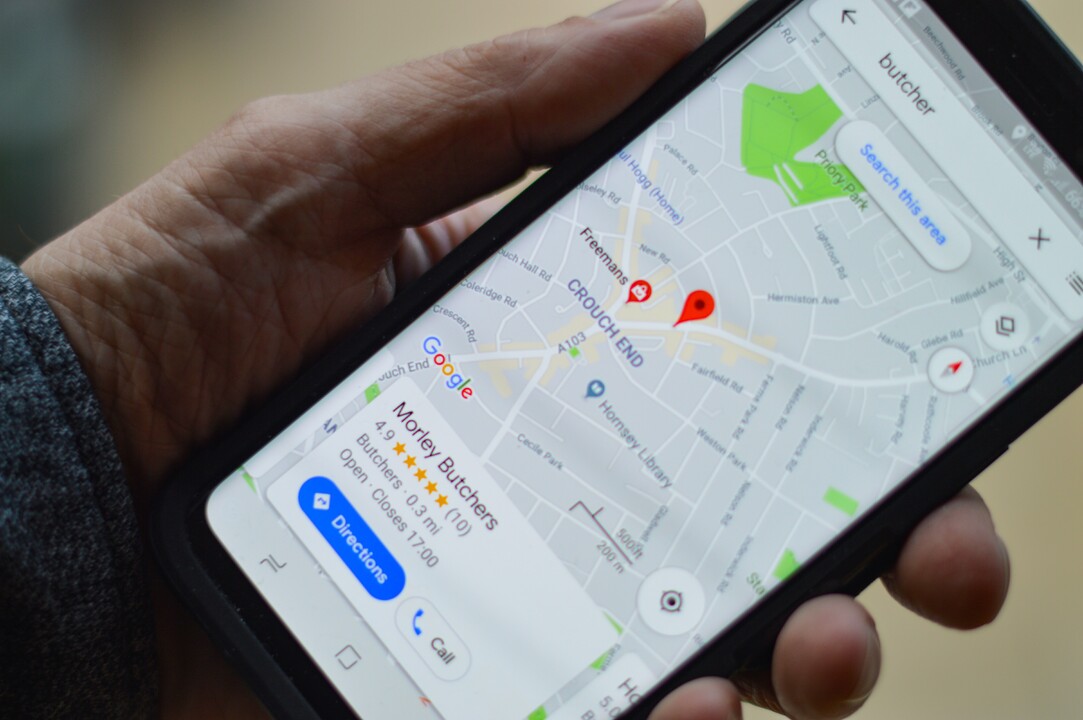BLOG
|
Is Home School Better For Kids?
Sometimes, parents choose to let their kids attend home school rather than letting them attend the normal school. But then, there are some parents who wonder if home schooling is really good for kids or not. Know the reasons behind with the following ideas in this article.
For children, who have predominantly inattentive kind of ADHD, symptoms may include: ADHD can be a serious issue that parents should immediately address. So, if you suspect that your child might be having one, do not think twice and bring him immediately to a medical professional, who can suggest ways on how to effectively deal with the problem. Early diagnosis means early treatment, so make sure to make the right decision today! |
Mobile Marketing: The Beauty Industry, Habits, Context, and Collaboration
Some people consider the digital consumer more difficult to conquer, less willing to purchase, and much more apathetic to the magic of the advertising message. The following paragraphs defend the opposite: the propensity to buy remains - if it's not even greater. The biggest point is that technology has brought the power of selectivity to customers' hands.
This can be shown using different words. The increase of mobile connections and dissemination of devices that allow you to move around without losing those have been breaking geographical barriers, facilitating transactions (such as the modern lack of need for physical money), and personalizing experiences. Since the beginning of the internet, many tools and techniques have emerged to guarantee the user the chance to find what he needed when he wanted it. For companies, however, there is a counterpoint. While the digital environment is an excellent field of opportunity and attracts potential buyers successfully, it inspires confusion in some of them. How to overcome the expressive share of competitors? How to manage the brand image among more critical and 24h/day connected consumers? Last, but not least, how to retain users' attention for enough time and they know the brand exists, after all? The Latin beauty companies Natura and Avon - the second has become part of the group Natura & Co. - have overcome the last issue a long time ago. Very popular in South America and expanding, they are prosperous in making prospects know them. However, they still face challenges as those mentioned above. The digital transition is a strategic process that should not be ignored even by companies with greater market consolidation worldwide. In the context of its recent entry into the Natura & Co. Group, Avon encountered resistance from its consultants and end customers in the acquisition of some of its online channels via mobile. Looking for some modernization and constant expansion, its executives identified an urgent need to define strategies that would inspire the target audiences to identify with Avon's new phase, especially allowing themselves to trust and buy from its online channels. At first, it was seen that both companies were providing multiplatform content (social networks, e-commerce, applications, institutional sites, Search Ads, etc.) that suggest a connection with consultants and clients, offering experiences that seemed to align with both audiences. However, to go further, the real secret was discovered later, and it's called "context". To achieve the desired results, searching for demographic and psychographic data on the audience was no longer enough if it was only focused on the "whole" group or parts of it. One-on-one connections became the word of the hour. An individual understanding of each user became vital, as well as taking their individual and personalized experiences to another level. Time to take action! With that in mind, the beauty companies could get their hands dirty! With transparency and respecting the General Data Protection Regulation (GDPR), it was proposed to adopt tools to map the consultants' and final consumers' mobile behavior. The goal was to identify particular opportunities in their individual routines and offer contextualized solutions to their lives. It was also suggested to apply Contextual Marketing on the companies' commercial websites and mobile apps, so that landing pages, exclusive offers, and information were presented on each prospect's screen in a particular way. The criteria would be the user's own navigation and behavior on his personal device. Smart navigation, push notifications, Virtual Reality, and SMS campaigns were an extra solution to increase contextualization and build one-to-one relationships. As an example, the online proof of makeup/products through the insertion of photos is an excellent opportunity to get users' attention and make them more secure to complete the purchase. The option to share the makeup test on social media would be a plus, of course! Since we're talking about it, filters are also a good option to generate visibility and engagement. Through context and personalization, brands will seek to strengthen a relationship with consultants and end customers by delivering relevance, value, and consistency to each point of contact. Knowing the audience at an individual level is a direct demonstration of care, empathy, appreciation - elements that transcend the purchase of products and services. In addition to demonstrating how well each consumer is known and being assertive through personalized conversations, companies' digital strategic planning must also consider the word “collaboration”. Presenting her as another protagonist of digital success, Kotler emphasizes that “traditionally, consumers are passive objects of sales techniques. In a connected world, the idea is for both sides to obtain commercial value in an active way ” (2017). |
Live Program conducted by
|
Existing is being easily found
Those girls screaming of happiness when strolling in the mall we see in many American movies have a point. A building where we can find almost anything, give ourselves some sparkling gifts, and relax - forgetting all the problems in the world - seems like the perfect place to be.
But there is something crucial to consider regarding the experience described above. People that spend hours going from one store to another - trying clothes, tasting foods, and more - carry in their pockets the 21st Century’s gold: time. Think about the time spent in displacement, face-to-face choices, walking, and going through shelves and sections that don’t fit you just to get to the ones you want. Well, some of this decade’s main features are the excess information, extreme variety of alternatives, and the lack of time to process all of that. So what if we have a solution to connect people to what they want while ensuring them the same satisfaction as the girls from those movies? What if we could accelerate the buying journey and cover millions of prospects that don’t have time to choose and need a quicker solution for whatever they want to solve? It’s simple if you think about it. Forgive my words but, instead of forcing products and services down people’s throats, wouldn’t it be nice if you could offer them relevance and solutions at the exact moment when they needed it - wherever they are? This is precisely what search engines like Google help you to do. To see how this works, reflect on customers’ behavior nowadays. Malls are still a national passion in many countries but, sometimes, even before driving a car to go to it, you search on your phone for what exactly you are going to look for there. With an internet connection and a little ability, it’s easy for anyone to find a mall’s greatest stores, comparing prices, checking other clients’ previous shopping experiences, reading about the brands’ reputation… in short, getting information enough to buy from companies not only because they need it, but because they want to. Technology has empowered consumers in such a way they can check out a purchase without leaving home and receive an order at the door in just a couple of minutes. They can learn about you deeply before you even have the chance to use persuasive techniques to make them hire your services. If not well prepared, your business finds itself in front of a powerful audience that types its name on Google, Bing, Yahoo, and receives a lot of negative information about its service, disregarded delivery times, and incompatibility between brand values and real attitudes. Even worse: prospects can be at the Consideration or Decision stage and already know they have a problem to solve. Then, they open a search page and look for the best solution to it and find absolutely nothing about you or your business, not even knowing that you exist. This is the point: what is the first place where people go when they want to know about you or find a solution that your products and services happen to solve? Search sites. If you’re not there, you simply do not exist for those who live outside your neighborhood. That said, there is a very important thing to consider about the online customers’ behavior. The strategy of interrupting them with Ads - like in television, radio, and traditional newspapers - was replaced by attraction techniques, focused on bringing them to you after saving a tutorial on Pinterest, engaging with specific tags on Instagram, checking in some places on Foursquare, typing a specific expression on Google or Bing… So, here is the first rule of a successful SEO strategy: much more assertive than trying to convince people to buy from you through repetition is to give them context and respect their own time. I’m not trying to outshine the importance of traditional marketing techniques, but call your attention to some particularities of this new business field: the Internet. As discussed before, the critical sense and the search for agile solutions are two marks of the new digital consumer, and endorsing his liberty is key to get his confidence. In the Digital Age, it’s more valuable to offer services for who wants them and where and when this person is more open to hiring them - what, if you think about it, is a much more assertive way to invest your money. Hubspot always suggests the practice of giving the right message to the right people at the right time, and SEO has everything to do with this. The acronym is short for Search Engine Optimization, which is “the process of optimizing your online content so that a search engine likes to show it as a top result for searches of a certain keyword” (Neil Patel). It's also known as "incredible magic", but you'll learn how it works in the next article! See you soon :) |
Diversity: the spice that the organization lacked
Water and alcohol are different solvents, but, if put together, the second one contributes to the first one to achieve its ebullition point a bit faster. So are the flavors of gastronomy and human relationships - sets of elements that, together, can arise efficiency and better final deliveries.
If we think of human beings as living nuclei - little in size but giants in their own particularities, it's easy to deduce the places where they agglomerate are, by nature, plural. This heterogeneity fits the family group, personal relationships, and work routine, and gets more intense as globalization makes societies more inclusive and horizontal. In the corporate sphere, managing the Organizational Diversity is like the spoon that keeps all the ingredients moving without letting them stick to the bottom of the pan and burn. This is exemplified in a publicity agency that, as time went by, diversified its staff - reproducing an expressive global trend. Developing this example, we can picture a company no longer composed of employees with the same physical features and converging subjectivities. The variety of genders, ethnicities, positions, and skills drew a new profile for the organization in such a natural way that, although perceived, the new brand's identity wasn't managed. Over time, social bubbles and conflicts of coexistence were formed, and maintaining a culture of distance, the agency began to be threatened by the deficit in human treatment. Well, organizations are, above all, conglomerates of pieces that, to coexist, need to be cohesively gathered. The first step to avoiding a problem to expand is to understand it, and Organizational Climate research ends up being a great deal to identify the existing conflicts and their causes. Evaluating the agency's internal environment can be divided into phases, such as investigation, communication, implementation, and monitoring. The process isn't finished when it ends, but must be continuous. Data collection is also important both because consistency between values and actions is essential to retain stakeholders and because aligned purposes between companies and employees are nothing less than vital. Preventing conflicts requires management systems that allow open discussions with various points of view, especially if they are different. Once the initial assessment is made, it's time to process information and decide what to do to increase the team's integration and consequent productivity. The proposal is to awake or stimulate in the "boat crew" the sense of belonging. We can start from policies of valuing individuality and turning differences into creative solutions. To get there, managers will promote conversation wheels between "opponent" groups to debate matters like gender, generational conflicts, and ethnic differences. Intranet and internal information murals, more than being a vertical communication channel, will be a place of social exchange. Still, dynamics and lectures will present to each sector the work developed by the other teams, disclosing the particularities that make each one brilliant. The maturation of the Organizational Culture takes time, but it starts with the perception that diversity, in fact, was the spice that the organization lacked. |
You've heard about Fusion Food. But what about "Work Fusion"?
We like examples. If you work in the business industry, for example, you certainly were told marketers and programmers had completely different professional tasks. Even their behavior seemed like water and oil: marketers, the "too sensitive" ones, and programmers, the "heartless" guys. This applies to many other professions, but we want to provoke your critical sense.
Well, thinking about these two careers, there are still activities they can't share with the other team - such as coding or producing an advertising piece following unknown legal and technical standards. However, not only marketers are rational and programmers have hearts, with each passing day, their work dialogues, and are even mixed in many points. The merge of both professions is a trend that gets clear as the digital revolution requires from advertisers typical hard skills of programming and, from computer engineers, among many other things, some marketing industry skills. When we talk about startups that bring new products and services to digital customers or completely redesign an existing service - optimizing it -, the user experience and customer satisfaction are everything at the end (and beginning) of the day. If you seat every day at your chair in the IT room of your BYOD company and receives regular briefings to develop specific apps, make yourself this question: for how long will companies of the future be interested in professionals who know only how to write codes, but do not have the cognitive maturity to interpret the end user's needs and the business intelligence to devise interfaces with greater usability than those of competitors? If you're a professional Product Designer, will your business really be real to what people want if you always rely on your friend from Marketing to explain to you terms like UGC, Bounce Rate, CTR, Sales Funnel, Traffic, Big Data, and Scaneability? And what if Digital Marketing is your thing? How far will you go in your career if you can't manage (or aren't open to learning) how to design a project for your enterprise to develop a mobile application that would allow your costumers to finalize their purchases much quicker than through the website? Beyond other things, planning a simple Social Media Calendar ends up being a complex task if you're not able to track your buyer persona's behavior, to understand your own Data Architecture, or to save your files in the cloud. Are we right? You can overcome boundaries! Thinking a lot about it in the last days, it's clear we'll always need to have a focus, but the market asks for multitasking. We can follow Octavia Spencer in "Hidden Figures" (20th Century FOX, 2016): by seeing the IBM Structure coming and realizing the threat of substitution, her character was successful in adapting. Reflect on that: day by day, there are a lot of professionals and fewer and fewer job vacancies as we know them. Professional profiles are changing. Many current professions are being replaced by machines. So what would differentiate us all in the near future that actually seems like today? Well, in case you didn't hear yet, Uber already promised flying cars for 2023. Let's get some answers I'll give it a try: combine the best of the machine to that one thing not even the AI with the best rapport technique could offer: the ability to dominate the engine plus the sensitivity to interpret people's humanity. Is it much pretentious? We call it necessary. You can be sure many of us already are told we should choose a single area of expertise and specialize only in it, not looking to the other side. But what would we say when asked what Marketing has to do with Programming? "Simply everything".
|
E-commerce Management begins with a brave look inside
In markets where the boundaries between online and offline become increasingly difficult to distinguish, the importance of brands being present in the consumer's life at the time of the purchase decision grows. This means being remembered, considered, seen, and requires taking into account the customers' desire to have their uniqueness valued and, at the same time, feeling part of a group. Waiting for a great example?
It is in this scenario that we can set the example of the shoe brand Woman Shoes (WS), a hypothetical retail store for women's shoes located in New York, USA. The company had become recognized for its good service and infrastructure, quality and variety of products, and for the differential of having in its stock models in special numbering for customers wearing more than 10. Over time, its owner-partners realized that, in order to continue offering comfort, practicality, and fashion trends to customers, it would be necessary to go beyond what was already done. They opted for a new sales channel on the web without having prior knowledge about the management of e-commerce platforms and the behavior of digital consumers yet. So, from where to start? In addition to the bibliographic expertise in relation to the new yorkers' profile (something we're always asking your attention on), the journey to the success of WS should start with a greater understanding of the pains, anxieties, and specific needs of the business persona - that is, once again, the fictional character who represents the ideal customer of the brand. In this case, the introductory analysis shall identify who's the person that, in fact, buys at WS, assuming that, in order to design new customers, it is necessary to know, in-depth, the current ones. Thus, the sampling plan will include customers who already buy at the store. How strong and valuable can a new online channel prove to be to solve the problems of the clientele that already walk side by side with the company? With the descriptive and behavioral variables of these people reunited (demographic, socioeconomic, and psychographic information, data on purchase motivation, use of the product and perceived value, among others), gathered and processed through an analysis of the registration database and a survey with all customers who visit the store for 30 days, the target audience's profile is outlined. Once you have this important data, you'll be much more qualified to produce all the advertising pieces that will attract traffic to your e-commerce platform! That's because you'll be operating according to the most common goal for any successful online business: delivering the right message to the right people at the right time. You should know from know on that, when it comes to digital marketing, offline actions can be big allies. In short words, integration is key! For example, to boost the number of prospects and clients on your website - based on our example above -, some great ideas to consider are: Also very important to point: your fun tone and intimate approach should go as far as the customer's profile allows, even in a dynamic network like Twitter. Testimonials from satisfied customers and tips on use, customization, and conservation of the shoes shall be explored. In parallel, an e-commerce website that applies Marketing 4.0 should be built and maintained in order to, more than focus on the human being, consider the sales funnel, and cover every aspect of the customer journey. I also suggest the integration with a fashion blog, making photos and information about products/services/values widely available, the production of an omnichannel communication using the persona's own language, and, as a way to stimulate conversation between customers, a public and native forum. For the most agnostic clientele, a booklet in the form of an infographic categorizing foot types by size and shape and suggesting specific shoes for each one as a way to reduce the fear of buying online. Once is not possible to try on the shoes in person, at least the store has by its side the "real-time" factor. |
Telling stories to be remembered
Business is the apple of the eye of many entrepreneurs. In the business environment, it’s difficult to replace old habits with new processes. About the working method, it’s always painful to hear criticism. And it’s a real exercise in humility to observe the surrounding environment and transform yourself with it.
Regardless of their size, companies are almost like children we have seen growing. As they developed, we nurtured, supported, guided them. How many times did we need to get stronger to take the risk and make decisions about it? How many sleepless nights have been reserved for full dedication to them? And how many times their victories felt like ours too? When we reflect on this scenario, it becomes easier to understand how tempting it is to talk only about our products (on a social network like Instagram, for example). That beautiful blouse that we produce for our customers is our greatest pride, we have to publicize it! And what about this beautiful necklace? It could suit any client, for sure. If what I sell are cosmetics, the price and photo of an incredible mouth with my lipstick would be enough - or even all the eyeliner colors I have available for immediate delivery. As social networks are a space widely used to communicate with the world, they are a land where this is common. The problem is that, increasingly, the answers to the question "Would you have a minute to talk about our new release?" are negative. To point an example, statistics from EMarketer in 2017 show that 70.7% of American companies already used Instagram in that year. A lot, no? Now, imagine a metropolis with an expressive number of women's boutiques - New York, for example - one of which you own. Each of these stores - including yours - has an Instagram account. Only in that niche (women's clothing), there are hundreds of online profiles. In other words, there are hundreds of entrepreneurs with a dream to stand out and be chosen by consumers. But what if all that pages published only the stock on sale, their best discounts, and the products that have just become available for purchase? What if this extensive volume of accounts was a succession of virtual storefronts that only show blouses, models wearing pants, and, in the caption, the value of each piece? A simple look is needed for us to notice the vast majority of companies enter this statistic, and here lies the trap. In the Digital Age, it's hard to stick to consumers' minds if you just do more of the same. Brands that adopt this strategy become the people of that party that we don't like to go to anymore: they show no diversity. What do leaders in online engagement (like MAC Cosmetics, Netflix, and Coke) have in common? Representativeness, relevant information, substance. In addition to self-promotion, they address to people what they want to see. Market giants develop what we call "Content Marketing", a set of strategies to offer people innovative, original, useful content that creates value for their lives. Tutorials, tips, backstage, humor, quizzes ... Storytelling is the letter of the day. In his book Brandscaping, Andrew M. Davis (2012) invites us to think differently and learn about this strategy, which, if well executed, promises to leverage results and create a more solid connection between brands and consumers. Check out some tips: The market is reinventing itself and the format of conversations has changed. It is urgent to find new ways to interact with consumers. I reinforce that it’s difficult to be seen and, even more, to be remembered. It’s important to explore innovative ways to promote your products. For example, in 2017, Nestlé produced a campaign for Instagram teaching “How to plant a Succulent” (type of cactus). The "vase" used would be an empty can of one of its milk-based products. With more than 250 million active users per day (Facebook data - Carolyn Everson, 2017), Instagram Stories is an excellent tool for generating engagement that offers a world of possibilities. The channel is easy to use and also perfect to exercise creativity! Adding the location to your post helps users find your creative content. The frequency of posts is critical. Beyond these important tips, do you already know the rule 80/20? In Content Management, we say about 80% of your content on social networks must be aimed at educating, instructing, and encouraging public participation. Unlike the more common practice, only 20% should be self-promotional. The formats for you to invest in and attract your prospects’ attention are many! Videos, templates, reports, tutorials, infographics, slide presentations, personalized sheets, case studies, games… Which ones seem to fit better in your buyer persona’s routine? And, as you’re going to see, which ones relationship with the phase of the Sales Process your client can be categorized in? In addition to the format, choose the channels in which you will disponibility your content. An optimized blog, email marketing, varied social networks, a Youtube channel… Or even all of them integrated. What’s gonna be your digital approach? It’s essential for you to know you don’t need to have an account in every single channel of the world, just in those ones in which your target audience is! Also, if you can’t count on a large team, always prefer the little well done over quantity without quality. Every detail counts and can damage your reputation. But what do I mean when I say your content needs to be contextualized with the specific phase of the Sales Process your prospect finds himself in? In which way could you possibly tailor your strategies to the customer's behavior? Let’s learn about leads & the Purchase Funnel.
|
A collection of data itself makes no miracles
It must be organized and extractable. The last affirmation may seem pretty obvious when you start reading this article, but - believe me -, not so much when it comes to the corporative routine. In the past few weeks, I keep thinking about a phrase that, as fast as it can get to our ears, can easily be gone with the wind without the right attention. Regardless of word order, it's something like this:
"To become useful and be turned into information, data need to be processed until they get intelligible". When well used, they can do wonders for our annual revenues. If you are allowed to develop your administrative skills in a business platform, you probably already know that sales results not only are but rely on numbers. All right, data about our clients, competitors, and market share are important. But here come some questions. What does it mean to become "intelligible"? How to guarantee that data will turn into information and arrive at your Manager's desk ready to support his decisions? And, most of all, what's the turning point when data become information and how to navigate through it masterfully? First of all, alphanumerics need to be extractable from the base in which they were stored. That implies a trained team and an agile system. Imagine that your team offers professional customer service and, by following a sales script, make all the right questions. The next step is to type their answers on a keyboard and, then, they go to a memory device to be analyzed later. When that "later" comes, will the company's employees be prepared to access what they're looking for on the database? Does the chosen platform offer intuitive tools and allow them to rank data by specific categories? And one more question: in the way they'd been organized on the base, are the letters and numbers transferable to a platform like Excel, for example? The second point is to encourage a growth mindset in the IT staff as well. Why is it vital? Because, as your enterprise gets bigger, the larger is its database, and the more efficient it must be the computer solutions to process what is stored in that. Sometimes, you'll have a major discovery to make and simply won't reach it because, whenever you try to download data, your system hangs up. Let it be no more than a probability. Last but not least, data analysis is an investigative process idealized to help companies to achieve goals (as successful branding, expansion, improvement in customer relationships, and increased sales) in a more strategic and assertive way. However, itself, it makes no miracles. You must be aware of where you wanna go to find how will you get there and if you're getting closer. Before looking at an organized collection of data, it's worth questioning: "right now, I'm gonna find all kinds of answers for many questions we'd make, but what is the one I'm looking for?". The Key Performance Indicators (KPIs) can help you in this mission. Stay tuned to learn all about them soon!
|
The Purchase Funnel: understanding the buyer's journey
When hearing about a “Sales Process”, many people may picture the image of a client seeing an ad on television, getting interested in the offer, and going to the store to finalize the purchase. In the digital environment, the flow is a little more branched and we say the buyer goes through a “Purchase Funnel”, which we separate in phases. But why “funnel”?
Visualize the top of this structure - it’s larger and there’s where the process starts: with a great number of prospects. As they turn into leads and we head to the bottom of the funnel, the number of potential clients decreases and the width also decreases. From the top to the bottom, the Purchase Funnel is divided into six main phases: Awareness, Interest, Consideration, Intent, Evaluation, and Purchase. Some theorists estimate there is still a seventh phase: the Retention. Before buying anything from your enterprise, people must know it exists, of course. Will they discover your business through a friend’s indication, a podcast, or a full banner in an online newspaper, for example? That’s the Awareness phase. It’s very important to let people get to know you without being invasive, and that’s the stage when occurs the lead generation - people give information like name and email address in exchange for some benefits. During the entire Interest and Consideration phases, and part of the Intent one, we work mostly on the lead nurturing - although this tactic can be applied in the entire funnel. We have a new expression in the area! Lead nurturing is a series of strategic actions to build trust, arouse desire, and help your potential clients to increase self-awareness - establishing strong relationships. An example to facilitate association is a series of emails offering relevant materials for your leads, like ebooks and free courses. But it’s very important to point this valuable content must relate to the lead’s personal experience. Imagine someone who has just discovered the importance of exercising. It might not be interesting to offer a discount coupon for your gym membership, but a suitable article comparing the pros and cons of exercising at home and at a gym. Respectively, the Interest, Consideration, and Intent phases explore the leads’ interest in your brand, consideration of buying from you, and intent of buying from you (even placing something in the shopping cart). Do you realize how subtle the differences are? Marketing requires sensitivity in understanding people. The Evaluation stage reflects a feature that stands out a lot in the digital consumer: a high level of demand and criticism. The Purchase Funnel comes to a point where your leads are almost ready to pay for your products or services, but they still need a final check. Beyond a great balance between quality and price, what’s the element X that makes you unique and better than your competition - or, at least, the better choice? It’s time to show it. This journey certainly doesn’t end here but the Purchase phase is placed at the bottom of the funnel. After turning your leads into actual customers, retaining them means to delight them by delivering what you promised, offering excellent after-sales service, and keeping to nurture your buyers with relevant content. How to be assertive through the entire Purchase Funnel? By extracting, organizing, and interpreting data on the online customer behavior - specific for your target. If you can’t hire a data analyst any time soon, there are a lot of free and paid tools to help you in those tasks, especially in predictive and exploratory analysis to support your decisions. But pay extra attention to my words. Right now, I’m going to share with you a detail super important to understand the Purchase Funnel. The consumer’s trajectory is not always linear, but often fluid. What does it mean? Nothing prevents the customer’s journey from starting with the Intent phase, for example. Also, the journey doesn’t always follow the order established on a traditional Purchase Funnel. The lead can skip phases, repeat a specific step, and make a back-and-forth motion. Increasingly, the importance of understanding consumer behavior gets clearer. As your approach must be consistent with people’s expectations (including their absence), you need to become an expert on the other side to adapt to it, and data will be your best friend at this moment. Always have numbers and quality data by your side to give you directions and help you identify what applies to your specific case. Something marketers use to do a lot can help you go further into your comprehension of the Purchase Funnel, and it is to calculate some conversion rates. Basically, we look to phase after phase and to the number of prospects that find themselves in each one. It’s really about picturing the image of a funnel and schematizing the number of people who pass through one stage and move on to the next. Then, we calculate the percentage of people who went from the Awareness phase to the Interest one, from the Interest phase to the Consideration stage, and so on. For a specific campaign, this simple action can give you some insights and tips on people’s behavior. If you have a very low rate when comparing one phase with the one immediately after, a red light can be turned on: what could be preventing these potential customers from moving on to the next phase? Let’s test new strategies and consider new titles, CTAs, colors, and see what works best with your audience. I just gave you a picture of one of the main digital marketing strategies in the world, but there is a lot more to discover and you must continue your studies. What is it for? The Purchase Funnel helps you visualize, track, and drive the evolution of your potential clients from the status of complete strangers to the buyers' role. I said the Awareness phase is the stage of lead generation and the interval between the Interest phase and the middle of the Intent stage is the moment to focus on lead nurturing. So, what happens with the second half of the Intent phase onwards? A new keyword stands out here: sales. At this point, the Marketing and Sales teams start to work side by side, the performance of one talking to the others. However, the limits between the specific tasks of each group generate historical controversies. In some companies, the division of responsibilities is blurred and the integration between hard & soft skills is not well worked out. A deep synergy between the Marketing and Sales teams is the ultimate articulation for a successful Inbound strategy. This way, you will now know about the perfect mix of both: Smarketing. One thing is to talk about the leads who are not ready to buy yet, a group we define as the exclusive responsibility of the Marketing team, the Marketing-Qualified Leads, or MQLs. However, as you noticed in the Purchase Funnel structure, there is a point where your company can allow itself to talk about products and services with them. This specific audience becomes Sales-Qualified Leads (SQLs). At first glance, the role of both teams may seem different but, at the end of the day, they are part of a complex Inbound strategy whose goal is to generate revenue. One team depends on the other so that the proposed sales increase ends up being the reward of all the work, after all. According to Hubspot, Smarketing is the “alignment between your sales and marketing teams created through frequent and direct communication between the two”. Very important to point is that “Marketing might have a mutually agreed upon leads Service Level Agreement (SLA) to hit, and Sales must agree to follow up with a certain amount of those leads”. This can help you to understand better how the process works. Marketing provides qualified leads to Sales, a target with way more chances to finalize the purchase than a heterogeneous and broad audience achieved by the Interruption Marketing, for example. On the other hand, through channels like chats, email, or any other type of online CRM, the Sales team’s tasks evolve turning the leads who already represent opportunities in actual clients. The professionals from both teams have specific skills to work. Beyond that, their abilities are complementary. So how to integrate them and make this synergy real? Tips like having sales and marketing meet frequently, mixing marketing and sales desks together, agreeing on terminology, and stimulating mutual feedbacks between the teams are given by The Marketing Squad. Also, have you ever heard about “Closed-Loop” Reporting? This model “means ‘closing the loop’ between the data that marketing is collecting — usually in a marketing automation system — and the data that the sales team is collecting, which is generally seen in a CRM”, as pointed by the New Breed Marketing agency. That’s an additional way of making your Purchase Funnel more assertive and transforming your sales process. As this course has been showing, what could be more reliable to support decisions when it comes to investing your money on boosting sales than data? For an impeccable Inbound Strategy, it’s worthy to mix a great Inbound Marketing with a powerful Inbound Sales, but the latter is a topic for an upcoming meeting. Woohoo! Now, you have a great view on how to attract online customers to you instead of entering their lives interrupting their routines. This is a trend that is definitely here to stay!
|
e-Learning: five reasons why you should join this study model starting today!
If you are an entrepreneur, a company employee, a nonprofit organization's member, or part of the global labor market in any way, you'll absolutely agree: time is not silver, but gold. As it seems to move faster day by day, sometimes it gets harder to organize our daily tasks, reconcile work and private life, and even take some time for ourselves - to watch a movie, test a new recipe, or realize our neighborhood has a new and cozy library.
Not only has the lifestyle of today's professionals changed but the watchword for most of our activities is "agility". After all, we need to fit a much wider range of responsibilities in a single day. Several factors contributed to building this accelerated reality, such as globalization, the growing offer of technologies, and the greater demand for multi-tasking professionals. We can say for now that, well, the scenario is certainly challenging, but for the ones who do not fear the battlefield, it provides almost every tool needed to win. The possibility of studying anytime from any country in any language is a major example of that. We are talking about e-Learning, a study model defined by the Oxford Dictionary as a "learning conducted via electronic media, typically on the Internet". To understand why this method is increasingly successful worldwide and why you should bring it to your routine today, just imagine learning almost anything in the comfort of your home or office, at the time that works best for you, fastly and in your own way. Have you pictured it and gotten some self-motivation to start? Then, join me to check out the five reasons why I believe you shouldn't let this opportunity go: That's right! If you're looking for a job, or maybe a promotion, and neither classroom nor online classes fit your budget at the moment, the web provides many websites that offer free courses (certified or not) to increase your chances. Just to give an example, Global Sparks offers access to over 15,100 free online classes and more than 187,000 low-cost classes from trainers, entrepreneurs, teachers, and universities from all over the world. From lessons with the best professors in Asia to complete mentoring with American trainers, live webinars and recorded classes can lead you to a whole new level in your career. Initiatives like the GoGLOBAL Business School, for example, have a growing range of Signature Transformational Programs and free content focused on empowering global business leaders, entrepreneurs, and youth, and you can check out here their webinars calendar. The e-Learning experience can put you in touch with many different cultures, nationalities, and people, showing the world is bigger than what our vision can catch. Besides that, it will require you strong discipline and self-motivation. If you're applying for tests like Toefl or IELTS, the platform Cambridge English offers more than 80 activities to practice. By the end of the journey, you'll be surprised by your capacity of overcoming obstacles! I gave a preview of this topic in the article beginning, but it's worth it to explore the subject a little more. Most online classes have a much lower cost than classroom lessons, mainly because you won't have spent on displacement from one place to another and also for the reason that producing content once and distributing it is much less expensive than keeping all expenses of physical space. You benefit from an excellent discount on your studies! As much as many companies are having to adapt to a home office model, as we are seeing a lot these days in a common movement to combat coronavirus, we'll also watch a big growth in adherence to e-learning not only at this historical moment but after it. People's habits are changing and the tendency is they choose practicality more and more. Ready to make a difference in people's lives, including yours? Prepared to embrace the energy and start this movement? So, let's go!
|
Green Marketing: trend & competitive differential
As time goes by, everything can change and undergo great transformations. So it is with habits, convictions, values, laws, rights, and the way man positions himself in the social environment. With trade and consumer relations, it's no different. Consumers' feelings, ideologies, and principles directly influence the act of buying, and brands capable of adapting to changes and understanding that, more and more, they buy with their hearts, acquire a clear competitive advantage.
In today's cosmetics market, driven by technologies that give transparency to the productive chain of beauty articles, a movement that illustrates this transformation of values is gaining strength. For many customers, achieving the desired beauty is no longer an end that justifies the means. Many more people seek to know the origin of the products, how they are produced, what effects they can bring to health, and how they contribute to preserving the natural environment. In fact, a whole new category of green products arises. Relating to this global trend, the beauty industry talks about a general awakening of environmental awareness at a time when production and consumption practices are influenced by demographic changes and population growth. The strengthening of ecological awareness meets the rapid scarcity of environmental resources. Taking as an example the cosmetics sector, a new market niche materializes to meet the demand of a new group of ecologically conscious consumers: that of bio cosmetics, products for aesthetic treatment with vegetable ingredients, without artificial preservatives or components of animal origin. It's worth noting that the new class of products that would take the taste of potential clients would go far beyond its vegetable matrix. Increasingly, it should be produced in order to preserve the sources of its raw material and guarantee not only the aesthetic transformation but the health of the users' skin. It's in this growing context of self-care, beauty combined with health, and the preservation of natural resources that sustainability in the production chain and in the composition of cosmetics gradually took on an air of innovation and became a true brand value. Taking advantage of the vast vegetable area, some brands have absorbed, for themselves, causes related to the environment. That's the example of companies like Natura and the youngest Simple Organic Beauty that, in addition to the constant association with nature on and offline, illustrate another very interesting phenomenon in this market: the defense of “real”, natural beauty, closely linked to self-love. The relationship between the phenomenon and the development of products with plant origin that value the health of the body and promise the enhancement of a beauty that customers, of course, already possessed, is in realizing that, in the field of beauty products, a current is taking hold where the purchase is preceded by an ideology - either in the companies' discourse or during the purchase decision. For companies looking for success in the online environment, understanding Social Networks as the place where their customers are and, above all, taking advantage of all the resources of Networks to get to know their audience - almost at an anthropological level - is, more and more, a matter of survival. Today, Green Marketing (Environmental Marketing, Ecologically Correct, or Ecomarketing) is more than a brand positioning. It's a trend that becomes a qualitative differential. This is a current reflection for professionals in the area, with emphasis on a point of attention. The application of Ecomarketing is faced with limitations in scientific knowledge - in order to offer, in fact, the promised natural product - and the consumer's checking power should not be underestimated. Like people, brands have an identity, personality, and, based on the social context that guides them, they can position themselves on different issues. Shared by Simple Organic on its Instagram profile, the expression “More beauty, less garbage” is, for example, a possible reflection of the way the company positions itself on the environment. The simple offer of good products at a fair price is no longer a factor to determine sales. Today, it also requires ideological compatibility with the public's personal values.
|
"Brands are much more than a logo"
|














